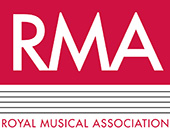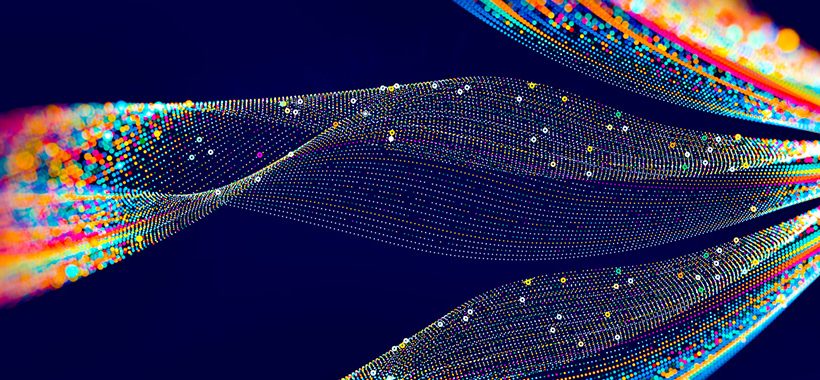Report: Music and/as Process Study Day, Goldsmiths, February 2023
Friday February 24th, 2023
Goldsmiths Study Day in collaboration with RMA Music and/as Process Study Group
On Friday February 24th, Goldsmiths Music Department collaborated with the Royal Music Association Music and/as Process study group for a study day held in the Professor Stuart Hall Building at Goldsmiths, New Cross. In June, 2022 the Music and/as Process annual conference was due to be held at the Farnham campus of the University of Creative Arts (UCA), but took place online as the train strike made travel for delegates difficult. A small group of delegates from this conference delivered their research in combination with doctoral students and one masters student from Goldsmiths. This was an opportunity for researchers at different stages in their career to share and discuss their work, findings, and ongoing practice research.[1] The topics focussed on audiovisual and interdisciplinary composition and installations, interdisciplinary process and practices between music and other discipline(s). The study day was well attended (I counted well over 50 people present), and among the audience were researchers from a range of disciplines – not only from music. Among the presenters were: Peter Falconer, Iris Garrelfs, Joseph Gusmano, Zubin Kanga, Midori Kumachi, Lee Scott Newcombe, Bea Redweik, Caitlin Rowley, Emmanuelle Waeckerle, Monty Williams.
Mapping processes
As a process, ‘mapping’ can be described as a method of conceptually establishing relationships between musical materials, or as a graphic means of creating potential sequences for musical materials. Iris Garrelfs’ paper (itself a shortened version of her keynote from the 2022 conference) presented her pre-compositional methodology as a map that enables her to critically refine and sharpen her thinking during the stages of her vocal sound art and improvisation research. Garrelfs described how her network of categories (i.e.: meanings, identities, techniques, abstractions, movements, gestures, etc) are used as ‘inputs’, that, when connected, reveal whether ‘blend fields’ and ‘nodes’ are meaningfully established. This critical and conceptual mapping technique allows her thought the potential to become continuously and increasingly complex. Audiovisual artist and musician Monty Williams’ presented a poetically concise lecture-performance on “…the process of mapping through the related discourses of place and assemblage,” which has been realised as a website. In presenting a wealth of ideas from a vast array of authors Williams showed how their interconnection and cross-pollination helps create “…a performance ecosystem” that blurs “…the boundaries between performer, instrument and environment”. Interdisciplinary pianist Zubin Kanga presented on his highly successful Cyborg Soloists research project. One project that has emerged from this was Luke Nikel’s interdisciplinary work hhiiddeenn vvoorrttiicceess. Zubin expanded on his experiences of the techno-social relationships forged by Nikel’s work. Nikel, whose affinity to the rollercoaster is a prominent feature of his recent work, creates interdisciplinary pieces within which infinite rollercoaster and pitch patterns are constructed, to create infinite scalar material reminiscent to approaches taken by Jean-Claude Risset.
In his ongoing meta-fictional project, Seaton Snook, Peter Falconer focuses on constructing a musical and cultural history of an invented place in the North-East of England. By creating a mythical series of events and stories Falconer’s compelling and complex abundance of narratives entice one into thinking that there must be some truth hidden amongst all this somewhere. Falconer’s theoretical model is based on a circular network that relates: real world research – mythopoeia – artefact creation – artefact presentation. The Q&A ended by Falconer delivering some excellent advice to PhD students on having the courage to take risks where appropriate on the final form the PhD may take. If, for example, the best form it can take is in the form of Socratic discussion – or, in Falconer’s case, a website of parafiction about Seaton Snook – then that is the form it should take, since a more unconventional approach may change one’s thinking and reveal aspects of one’s research in unpredictable and insightful ways.
Iterative Processes
Iterative processes in practice research have been documented and developed by Lauren Redhead who, along with Richard Glover, founded the RMA Music and/as Process Study Group in 2013.[2] Composer and violist Caitlin Rowley presented her ongoing interdisciplinary work Quiet Songs. This work addresses all the seemingly insignificant sounds that fill her every day creative life. The regularity and discipline with which Rowley documented her video, recording and viola playing, provided a compelling case for how the many documentation forms and formats used by Rowley changes and refines her practice. Rowley regularly publishes her notebooks on her blog as Caitlin’s Composition notebooks. Bea Redweik’s work focuses on dynamic and liminal forms of songwriting as part of her interdisciplinary practice research. While interested in questions addressing the unfinished work and its potentiality, her practice research features iterative processes such as listening, testing, documentation, versioning, and critical self reflection. In the short video documentation, Redweik ‘performs’ the composition of a song while a former version of herself – seen as a video projection – is engaged in a similar activity while accompanied by her dog. For me this was a successful translation of the challenge to deconstruct and critique the pressure towards making final – and hence commodifiable – songs, and was realised with refreshing and playful humour.
Emmanuele Waeckerle presented a shorter version of the keynote delivered at the Music anad/as Process conference in 2022. For Waeckerle language itself is the main material; her work is often derived from rereading and a rewriting other literature. Waeckerle describes her approach as follows: “I readwalk and readwrite the world with the worlds of others.” Her work is often conceptual and her mainly text scores feature instructions that allow a specific performative situation to emerge. Her techniques are similar to those described in Kenneth Goldsmith’s Uncreative Writing, and further theoretical references were derived from Rosie Braidotti’s feminist post-human critical theory, and the rhizomatic approaches taken by Deleuze/Guattari, especially their Minor Literature (1986). The pieces presented were derived from Pauline Reage’s Story of O, or Henry David Thoreau’s Walking. My impression was that each piece was a further iteration of the work of rereading, repurposing and using new approaches to a given text all of which are processes Waeckerle has worked with for a great number of pieces.
Microtonality and timbral space
There is a great legacy and history of composers interested in tuning systems and in microtonality in general. The weakness of overly complex tuning systems is due to their being impractical to realise. Both Lee Scott Newcombe and Joseph Gusmano addressed this issue from different perspectives.
The installative and conceptual work presented by Lee Scott Newcombe has as its basis a 17-tone and 53-tone hyperchromatic scales. His combinatorial and algorithmic composition is often presented as long durational installations. Newcombe presented work featuring held pitches in non-repeating microtonal intervals using pre-tuned wine glasses filled with water, and self built organ organ pipes. The slowly unfolding and non-repetitive pitches create an extremely seductive, immersive and highly controlled sound word that I was personally very inspired by considering the short time we heard it for. In Joseph Gusmano’s research two main ideas meet: microtonal vocal music and concepts derived from speech therapy. Gusmano connects these using the well-known vocal quadrilateral which is itself a map of where the vowels can be found in the mouth. In doing this, and in developing a singer-friendly notation for this music, Gusmano showed how he had built the foundation for a microtonal music that is realistically performable for voices.
From a multitude of pitches to a multitude of locations: violinist Midori Komachi spoke about her visiting the historically important Steel Pavilion concert hall, famous for having 1008 loudspeakers. Clearly this space suggest that the spatial parameter can become part of the immediate experience of every piece of taped music or fixed media heard there. Alas this venue is no longer in use, and, as Komachi revealed, is in a state of disrepair and partial ruin. Her research also focussed on the major Japanese composer and polymath Yuji Takemitsu. Clearly remembering the experiences of hearing his work at the Steel Pavilion Takemitsu established and developed the concept of “spatial timbre” to create pluralistic spaces and movement of sound. Komachi derived this definition from Takemitsu’s as yet untranslated book: Mirror of Tree, Mirror of Field.
Conclusions
Part of the problem that composers have in describing the processes in their music, is described by David Harvey: “how does one capture process, movement and flow in one’s work with categories that cannot be other than fixed?”[3] The composers at this study were all, in their way, answering this question. Monty Williams cited Sally Jane Norman who asks provocatively, “…why bother to journey” , where, for all those presenting the impulse is clearly “…to move beyond the mundane towards unchartered terrain”. Perhaps similar to the ‘nodes’ of Iris Garrelf’s self-critical system of doing research, each presenter revealed how the processes in their work could become more visible.
[1] Information on this study can be found via this link, and the website of the RMA Music and/as Process study group can be found here.
[2] Redhead, Lauren. Entoptic Landscape and ijereja: music as an iterative process. New Sound: International Journal of Music, 49. 2017. Available online: https://www.newsound.org.rs/pdf/en/ns49/08.L.Redhead.pdf Accessed 09.03.2023
[3] Harvey, David. A Companion to Marx’s Grundrisse (London: Verso, 2023), xix.

